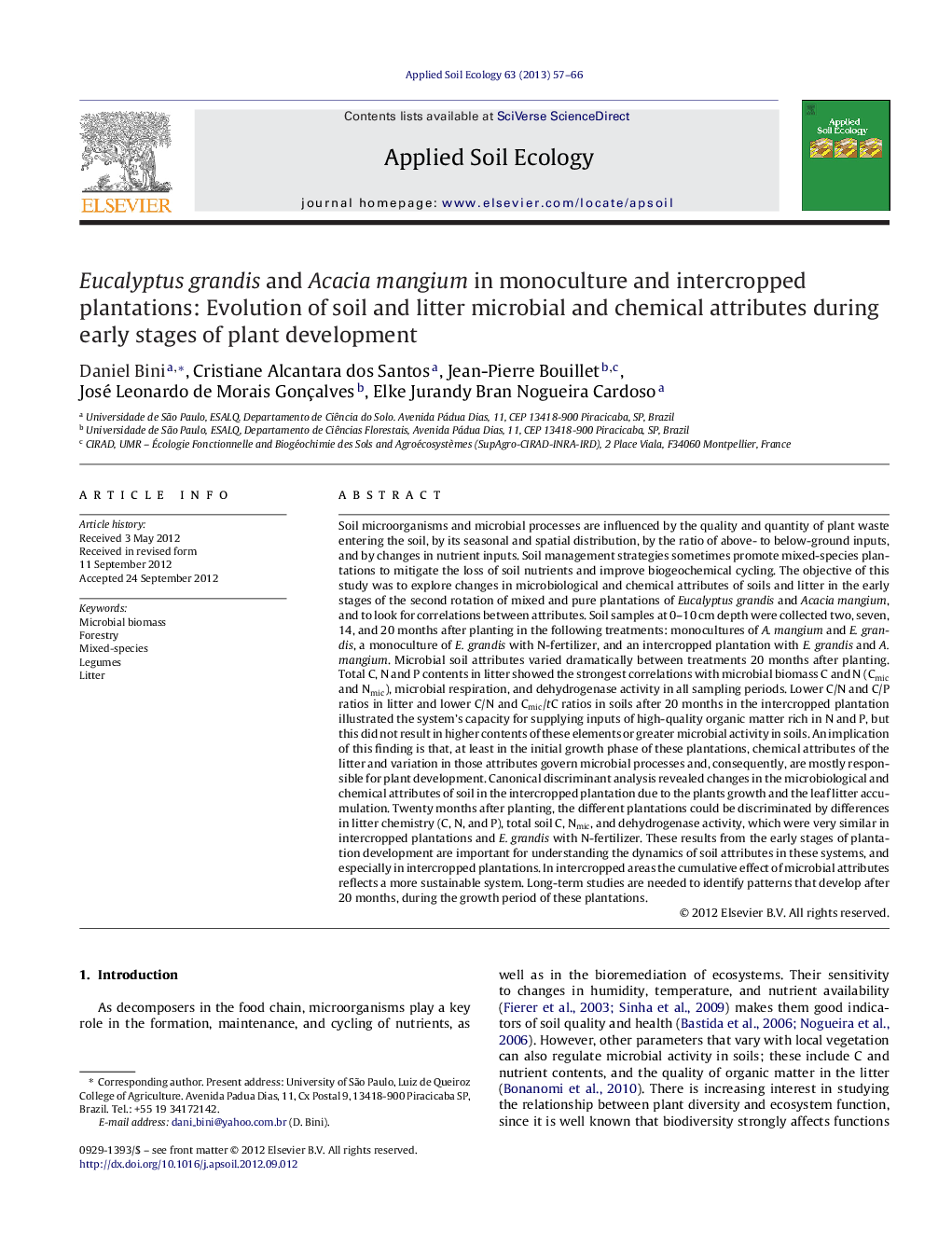| کد مقاله | کد نشریه | سال انتشار | مقاله انگلیسی | نسخه تمام متن |
|---|---|---|---|---|
| 4382533 | 1617820 | 2013 | 10 صفحه PDF | دانلود رایگان |

Soil microorganisms and microbial processes are influenced by the quality and quantity of plant waste entering the soil, by its seasonal and spatial distribution, by the ratio of above- to below-ground inputs, and by changes in nutrient inputs. Soil management strategies sometimes promote mixed-species plantations to mitigate the loss of soil nutrients and improve biogeochemical cycling. The objective of this study was to explore changes in microbiological and chemical attributes of soils and litter in the early stages of the second rotation of mixed and pure plantations of Eucalyptus grandis and Acacia mangium, and to look for correlations between attributes. Soil samples at 0–10 cm depth were collected two, seven, 14, and 20 months after planting in the following treatments: monocultures of A. mangium and E. grandis, a monoculture of E. grandis with N-fertilizer, and an intercropped plantation with E. grandis and A. mangium. Microbial soil attributes varied dramatically between treatments 20 months after planting. Total C, N and P contents in litter showed the strongest correlations with microbial biomass C and N (Cmic and Nmic), microbial respiration, and dehydrogenase activity in all sampling periods. Lower C/N and C/P ratios in litter and lower C/N and Cmic/tC ratios in soils after 20 months in the intercropped plantation illustrated the system's capacity for supplying inputs of high-quality organic matter rich in N and P, but this did not result in higher contents of these elements or greater microbial activity in soils. An implication of this finding is that, at least in the initial growth phase of these plantations, chemical attributes of the litter and variation in those attributes govern microbial processes and, consequently, are mostly responsible for plant development. Canonical discriminant analysis revealed changes in the microbiological and chemical attributes of soil in the intercropped plantation due to the plants growth and the leaf litter accumulation. Twenty months after planting, the different plantations could be discriminated by differences in litter chemistry (C, N, and P), total soil C, Nmic, and dehydrogenase activity, which were very similar in intercropped plantations and E. grandis with N-fertilizer. These results from the early stages of plantation development are important for understanding the dynamics of soil attributes in these systems, and especially in intercropped plantations. In intercropped areas the cumulative effect of microbial attributes reflects a more sustainable system. Long-term studies are needed to identify patterns that develop after 20 months, during the growth period of these plantations.
► Litter attributes showed the strongest correlation with soil microbial attributes.
► Soil chemical attributes showed little change over the 20-months study.
► Intercropped plantation showed low C/P and C/N ratios in litter.
► There were similarities between intercropped plantation and N-fertilized Eucalyptus grandis.
Journal: Applied Soil Ecology - Volume 63, January 2013, Pages 57–66